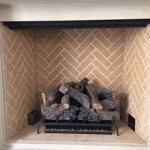Installing a Mantel on a Stone Fireplace: A Comprehensive Guide
Installing a mantel on a stone fireplace can significantly enhance the aesthetic appeal of a living space, transforming a purely functional element into a focal point of architectural interest. The process, however, requires careful planning, meticulous execution, and an understanding of various factors, including the type of stone, the weight of the mantel, and local building codes. This article provides a comprehensive guide to installing a mantel on a stone fireplace, outlining the necessary steps and considerations to ensure a safe and aesthetically pleasing result.
Before commencing the installation, several crucial preparations are essential. These preparatory steps ensure a smooth and successful project, minimizing potential complications and maximizing the longevity of the installation. The first step involves assessing the existing fireplace structure. This assessment includes determining the type of stone used in the fireplace construction, as different types of stone possess varying levels of porosity and structural integrity. Identifying the stone will inform the selection of appropriate adhesives and anchoring methods.
Next, the dimensions of both the fireplace and the intended mantel must be carefully measured. These measurements determine the optimal placement of the mantel relative to the firebox opening, ensuring both aesthetic balance and compliance with safety regulations. Local building codes often stipulate minimum clearances between combustible materials, such as wood mantels, and the firebox opening. Adhering to these regulations is paramount to prevent fire hazards.
Selecting the appropriate mantel is another critical consideration. Mantels are available in a wide range of materials, including wood, stone, concrete, and composite materials. The choice of material should complement the existing stone fireplace and the overall design aesthetic of the room. The weight of the mantel is a significant factor, as heavier mantels require more robust anchoring systems. Additionally, consider the style of the mantel, ensuring it harmonizes with the existing architecture and personal preferences.
Key Point 1: Preparing the Stone Surface for Adhesion
One of the most challenging aspects of installing a mantel on a stone fireplace is achieving a secure and lasting bond between the mantel and the stone surface. Stone, by its nature, can be porous, uneven, and sometimes coated with sealants or residues that hinder adhesion. Thorough preparation of the stone surface is therefore crucial for a successful installation.
The first step in preparing the stone surface involves cleaning it thoroughly. This can be accomplished using a stiff brush and a solution of mild detergent and water. Remove any loose debris, dirt, or soot that may be present on the surface. For stubborn stains or residues, a specialized stone cleaner may be necessary. Ensure that the cleaner is compatible with the type of stone used in the fireplace construction to avoid damaging the surface.
After cleaning, the stone surface needs to be roughened to create a better bonding surface for the adhesive. This can be achieved using a wire brush or a coarse grit sandpaper. Gently scrub the surface to create a slightly textured finish. Avoid excessive abrasion, as this could damage the stone. The goal is to create microscopic irregularities that will allow the adhesive to grip the surface more effectively.
Once the surface has been roughened, it is essential to remove any dust or debris generated during the process. A vacuum cleaner with a brush attachment is ideal for this purpose. Thoroughly vacuum the entire area where the mantel will be attached, ensuring that all traces of dust are removed. After vacuuming, wipe the surface with a clean, damp cloth to remove any remaining residue. Allow the surface to dry completely before proceeding to the next step.
Finally, consider applying a bonding agent or primer to the prepared stone surface. Bonding agents are designed to enhance the adhesion between the stone and the adhesive. These agents typically contain polymers that penetrate the pores of the stone, creating a stronger bond. Follow the manufacturer's instructions for applying the bonding agent, ensuring that it is evenly distributed and allowed to dry completely before applying the adhesive.
Key Point 2: Selecting and Applying the Appropriate Adhesive
The choice of adhesive is paramount to the success and longevity of a mantel installation on a stone fireplace. The adhesive must be capable of bonding to both the stone surface and the mantel material, while also withstanding the weight of the mantel and any potential thermal expansion or contraction caused by the fireplace. Several types of adhesives are suitable for this application, each with its own advantages and disadvantages.
Construction adhesive is a popular choice for installing mantels. These adhesives are typically formulated to provide a strong, flexible bond between various materials, including stone, wood, and concrete. Construction adhesives are available in a variety of formulations, including those specifically designed for use with stone. When selecting a construction adhesive, ensure that it is compatible with the type of stone used in the fireplace construction and the material of the mantel.
Epoxy adhesives offer superior strength and durability compared to construction adhesives. Epoxy adhesives consist of two components that are mixed together to create a chemical reaction that results in a very strong bond. Epoxy adhesives are particularly well-suited for installing heavy mantels or mantels made from porous materials such as stone or concrete. However, epoxy adhesives can be more difficult to work with than construction adhesives, as they typically have a shorter working time and require careful mixing of the two components.
Mortar is another option for installing mantels on stone fireplaces, particularly for mantels made from stone or concrete. Mortar provides a strong, rigid bond that is well-suited for supporting heavy loads. However, mortar is less flexible than construction adhesives or epoxy adhesives, and it may be more prone to cracking or crumbling over time. When using mortar, ensure that it is specifically formulated for use with stone and that it is properly mixed and applied.
Regardless of the type of adhesive chosen, it is essential to follow the manufacturer's instructions carefully. Apply the adhesive evenly to both the back of the mantel and the prepared stone surface. Use a notched trowel to create ridges in the adhesive, which will help to improve the bond. Press the mantel firmly against the stone surface, ensuring that it is properly aligned and level. Use shims to support the mantel while the adhesive cures, as this will prevent it from shifting or sagging. Allow the adhesive to cure completely before removing the shims and applying any finishing touches.
Key Point 3: Anchoring the Mantel for Enhanced Stability
While adhesive provides the primary bond between the mantel and the stone fireplace, additional anchoring is often necessary to enhance the stability and safety of the installation, particularly for heavier mantels or in areas prone to seismic activity. Anchoring methods provide mechanical support that complements the adhesive bond, ensuring that the mantel remains securely attached to the fireplace over time.
One common anchoring method involves using masonry screws or anchors. These screws or anchors are designed to be inserted into pre-drilled holes in the stone, providing a secure attachment point for the mantel. When using masonry screws or anchors, it is essential to select the appropriate size and type for the type of stone used in the fireplace construction. Drill pilot holes into the stone using a masonry drill bit, ensuring that the holes are deep enough to accommodate the screws or anchors. Insert the screws or anchors into the pilot holes and tighten them securely, being careful not to overtighten them and damage the stone.
Another anchoring method involves using metal brackets or support plates. These brackets or plates are attached to the back of the mantel and then secured to the stone fireplace using screws or anchors. Metal brackets or support plates provide additional support for the mantel, distributing the weight more evenly and preventing it from sagging or shifting over time. When using metal brackets or support plates, ensure that they are made from a durable material such as steel or aluminum and that they are properly sized for the weight of the mantel.
In some cases, it may be necessary to use a combination of anchoring methods to achieve the desired level of stability. For example, you might use masonry screws or anchors to secure the mantel to the stone fireplace and then use metal brackets or support plates to provide additional support. The choice of anchoring method will depend on the weight of the mantel, the type of stone used in the fireplace construction, and local building codes.
After the adhesive has cured and the anchoring system is in place, carefully inspect the installation to ensure that the mantel is securely attached to the fireplace. Gently push and pull on the mantel to test its stability. If there is any movement or play, additional anchoring may be necessary. Once you are satisfied that the mantel is securely attached, you can proceed with applying any finishing touches, such as caulking or painting.
Installing a mantel on a stone fireplace is a project that requires careful planning, meticulous execution, and a thorough understanding of the materials and methods involved. By following the steps outlined in this guide and adhering to local building codes, one can achieve a safe, aesthetically pleasing, and long-lasting installation that enhances the beauty and functionality of the living space.

Fireplace Mantel Installation Before And After

How To Build And Hang A Mantel On Stone Fireplace Shanty 2 Chic

How To Build And Hang A Mantel On Stone Fireplace Shanty 2 Chic

Guide Mantel Installation On A Stone Fireplace

Installing A Wood Mantel On Stone Wall Remodelaholic

How To Build And Hang A Mantel On Stone Fireplace Shanty 2 Chic

Installing And Making A Floating Mantle For Our Stone Fireplace

Installing And Making A Floating Mantle For Our Stone Fireplace

Installing A Wood Mantel On Stone Wall Remodelaholic

Eldorado Stone Fireplace Installation With Mantel Time Lapse Installing Veneer
Related Posts








